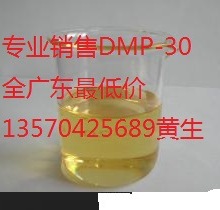Artificial Intelligence Full Course _ Artificial Intelligence Tutorial for Beginners _ Edureka [DownSub.com](1).txt - Ep24
(Editor: go)
 Solana Developer Bootcamp 2024 - Learn Blockchain and Full Stack Web3 Development - Projects 1-9 - Ep32
Solana Developer Bootcamp 2024 - Learn Blockchain and Full Stack Web3 Development - Projects 1-9 - Ep32 GenAI Essentials – Full Course for Beginners - Ep4
GenAI Essentials – Full Course for Beginners - Ep4 Solidity, Blockchain, and Smart Contract Course – Beginner to Expert Python Tutorial - Ep71
Solidity, Blockchain, and Smart Contract Course – Beginner to Expert Python Tutorial - Ep71 GenAI Essentials – Full Course for Beginners - Ep192
GenAI Essentials – Full Course for Beginners - Ep192![Web3 Developer in 2024 Roadmap_ Solidity, Smart Contract, and Blockchain Development [Full Course] - Ep48](https://cbu01.alicdn.com/img/ibank/2017/132/795/4319597231_763625000.220x220xz.jpg) Web3 Developer in 2024 Roadmap_ Solidity, Smart Contract, and Blockchain Development [Full Course] - Ep48
Web3 Developer in 2024 Roadmap_ Solidity, Smart Contract, and Blockchain Development [Full Course] - Ep48
- Learn Blockchain, Solidity, and Full Stack Web3 Development with JavaScript – 32-Hour Course - Ep14
- Harvard CS50’s Artificial Intelligence with Python – Full University Course - Ep9
- GenAI Essentials – Full Course for Beginners - Ep150
- GenAI Essentials – Full Course for Beginners - Ep4
- GenAI Essentials – Full Course for Beginners - Ep164
- Full interview_ Donald Trump details his plans for Day 1 and beyond in the White House - Ep4
- Harvard CS50’s Artificial Intelligence with Python – Full University Course - Ep18
- GenAI Essentials – Full Course for Beginners - Ep76
-
Learn Blockchain, Solidity, and Full Stack Web3 Development with JavaScript – 32-Hour Course - Ep262
 and nft Marketplace will beempty so with that I'm going to go aheadand delete nft Marketplace all ri
...[Details]
and nft Marketplace will beempty so with that I'm going to go aheadand delete nft Marketplace all ri
...[Details]
-
GenAI Essentials – Full Course for Beginners - Ep81
 withsomething here but anyway make makeyourself an account once you have youraccount uh you're good
...[Details]
withsomething here but anyway make makeyourself an account once you have youraccount uh you're good
...[Details]
-
Solidity, Blockchain, and Smart Contract Course – Beginner to Expert Python Tutorial - Ep128
 scroll up and we'll import this aswell import F from sl.png and boom thatlooks good one more comma d
...[Details]
scroll up and we'll import this aswell import F from sl.png and boom thatlooks good one more comma d
...[Details]
-
Solidity, Blockchain, and Smart Contract Course – Beginner to Expert Python Tutorial - Ep63
 use that modfunction in our fulfill Randomness withthe length of our players so we can sayU256 index
...[Details]
use that modfunction in our fulfill Randomness withthe length of our players so we can sayU256 index
...[Details]
-
Learn Blockchain, Solidity, and Full Stack Web3 Development with JavaScript – 32-Hour Course - Ep197
 have it be this doggy hereright so it's going to be an nft of justof purely this dog here the name i
...[Details]
have it be this doggy hereright so it's going to be an nft of justof purely this dog here the name i
...[Details]
-
Harvard CS50’s Artificial Intelligence with Python – Full University Course - Ep21
 will tell you exactly what move tomake is the optimal move to make nomatter what your opponent happe
...[Details]
will tell you exactly what move tomake is the optimal move to make nomatter what your opponent happe
...[Details]
-
Solidity, Blockchain, and Smart Contract Course – Beginner to Expert Python Tutorial - Ep117
 is going to be equal tothis dictionary that we make so we'rejust going to Route each one of thesecon
...[Details]
is going to be equal tothis dictionary that we make so we'rejust going to Route each one of thesecon
...[Details]
-
Solidity, Blockchain, and Smart Contract Course – Beginner to Expert Python Tutorial - Ep11
 the one tosend $25 uh to Bingley right how do weknow that actually happened and this iswhere all tho
...[Details]
the one tosend $25 uh to Bingley right how do weknow that actually happened and this iswhere all tho
...[Details]
-
 that to makeoffer that that struct at thetop and we will also rename Handlerwe'll call that we'll tu
...[Details]
that to makeoffer that that struct at thetop and we will also rename Handlerwe'll call that we'll tu
...[Details]
-
Solidity, Blockchain, and Smart Contract Course – Beginner to Expert Python Tutorial - Ep23
 theretrieve function on thatcontract so since we're just going to bereading State this can be a publ
...[Details]
theretrieve function on thatcontract so since we're just going to bereading State this can be a publ
...[Details]
- Artificial Intelligence Full Course _ Artificial Intelligence Tutorial for Beginners _ Edureka - Ep1
- GenAI Essentials – Full Course for Beginners - Ep104
- Web3 Incorporation in Panama (A Legal Guide) - Ep9
- Solidity, Blockchain, and Smart Contract Course – Beginner to Expert Python Tutorial - Ep82
- GenAI Essentials – Full Course for Beginners - Ep98
- Artificial Intelligence Full Course _ Artificial Intelligence Tutorial for Beginners _ Edureka - Ep28
- GenAI Essentials – Full Course for Beginners - Ep93


